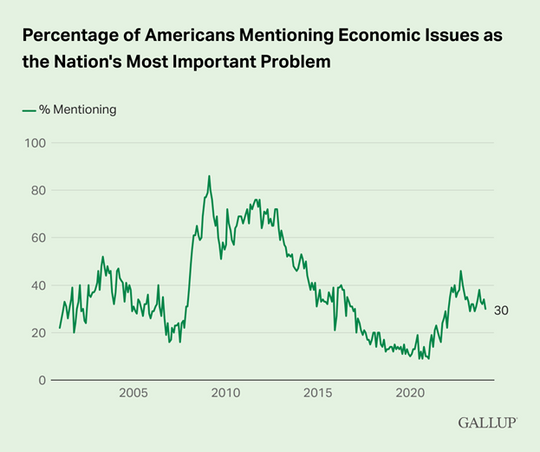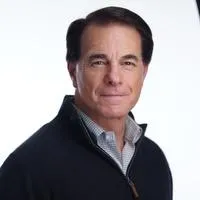
Will it Be Another Deja Vu Wild Ride of Hyper Inflation and Interest Rates?
A January 2024 Gallup Poll indicated that Americans mentioning the economy as a key issue has risen almost three-fold since 2019. In the category of Economic Problems, 76.7% was attributed to “Economy in General” and “High Cost of Living/Inflation”.
This was not a surprise to the Federal Reserve as slowing inflation was their primary purpose in initiating a rate hike campaign beginning in March 2022. Jerome Powell and the Federal Reserve were quick to start the campaign shortly after the CPI hit a 9% annualized clip in December 2021. On March 16, 2022, the Federal Reserve raised its Discount Rate for the next 13 consecutive months by nearly 500%.
The campaign was effective but not complete. The CPI is still hovering around 3.1%, as reported by the Bureau of Labor Statistics. Inflation may be a Dr. Jeckell and Mr. Hyde in which the Dr Jeckel inflation is seemingly tame while a Mr. Hyde inflation is ready to emerge with 1970’s era of devastation on the US economy.
It’s worth noting that this is the first time since 1983 that inflation measured by the CPI was above 5%. Quite a remarkable record and largely credited to former Federal Reserve Chairman Paul Volcker (1979 -198 ). Although Americans have enjoyed mild inflation since the 1980s, few remember the drastic measures and costs it took to establish such a long-term stable and sustainable economy. Like many freedoms we enjoy today, we too quickly forget the sacrifices that were made, and the stability of the economy is no different.
So, we will revisit the events that lead to what is now referred to as the “Volcker Shock” that remarkable stabilized the American economy for nearly five decades.
In 1952, the Personal Consumption Index was at a 2% annual rate. For the following 21 years the index didn’t increase above 5% until 1973.
Like the OPEC crisis in the early 1970’s, gas prices were soaring again, and fixed mortgage rates were in the mid-teens. I bought my first house in 1977 with a variable mortgage rate of 13% because I couldn’t afford the 17% fixed rate at the time.
Like all financial tsunamis, the soaring inflation wave was initiated years earlier. The start began in 1965 under President Lyndon B Johnson (1963-1969) with big increases of government spending that started first with his war on poverty along with military costs for the Vietnam war. Income tax rates were already at 53% for households earning $52,000, with the top tax bracket at 70%. Although the economy was at nearly full capacity, President Johnson didn’t have the political capital to raise taxes higher. While some of the spending was covered by Medicare, the balance was added to rising government deficits.
President Nixon inherited a terrible financial and political environment with riots and protests against the Vietnam War, huge government deficits, and seemingly non-stop recessions. To support the US dollar, President Nixon ended the system of “gold convertibility” for US dollars in 1971. Government spending under President Nixon soared for the Vietnam War along with new stimulus programs in an attempt to revive the economy after two recessions in 1970 and 1974.
What followed was historic inflation rates led by the surge of oil and gas prices during the OPEC crisis. Inflation soared from 3.8% in 1973 to 7.9% in 1974 and stayed above 6.5% for the next eight years.
President Carter appointed Paul Volcker as Federal Reserve Chairman on August 6, 1979. Ronald Reagan resoundingly defeated President Carter as the economy and world events seemed out of control. By 1981, the US was struggling under a second surge of double-digit inflation and unemployment in less than a decade.
Fed Chairman Paul Volcker inherited a very difficult situation. Does he raise interest rates higher to slow inflation but risk driving the economy into a deeper recession? To historians, it seemed obvious that drastic measures were required to tame the runaway train of the US economy. But what were those measures, what were the consequences, and most importantly, what can we learn from this era?
At first, Chairman Volcker started with small rate increases with concerns not to push the economy into further demise. However, in October 1979, he called an unscheduled Federal Open Market Committee (FOMC) meeting. The result was the committee’s agreement to a dramatically tighter monetary policy.
That month, the Federal interest rate was 13.7%, and by April 1980, they had raised it to 17.6%. The FOMC continued to approve rate increases that ultimately peaked at 20%, with the Prime Lending Rate peaking at 21.5% on December 19, 1982.
You can only imagine the protests by the main media and critics to the rapid rise in interest rates now coined as the “Volcker Shock”. It is akin to a saving a building on fire by starting an even bigger fire.
Senate Majority Leader Robert Bryd was quick to remark after the Fed started raising rates,
“Attempting to control inflation or protect the dollar by throwing legions of people out of work and shutting down shifts in our factories and mines is a hopeless policy.”
Protests continued from other industries, including farmers, who blocked the Federal Reserve headquarters with tractors. Most memorable was the building and carpenters’ industry mailing 2x4 studs to Volcker’s office, stating they were not needed as the mortgage market had dried up. Ben Bernanke (2006-2014) kept one of the 2x4s in his office in remembrance of Volcker’s conviction of doing what was not politically popular but economically necessary.
The Volcker Shock did work as inflation plummeted to below 5% by 1983 and was partially credited to the start of the longest-running bull stock market in history, rising over 3500% to January 2000.
The Federal Reserve interest rate campaign was widely criticized with projections of driving the economy into a deep recession. This is reminiscent of recent protests from the main media as Jerome Powell, current Federal Reserve Chairman, started their interest rate campaign in March 2022 with similar complaints of driving the economy into a recession.
Now that the CPI is close to the Fed’s target of 2%, analysts are projecting the Fed to be lowering rates soon. I don’t see it. If massive government spending during the Johnson and Nixon years is what led to the 1970s era of hyperinflation, the Mr. Hyde of inflation may still be lurking. The CPI never reached the Fed’s stated target of 2% and is still 50% above its goal. The government has increased spending with massive government stimulus programs, and annual deficits now exceed 100% of the annual GDP. It was only 30 years ago that during the Clinton Presidency the Federal budget was positive and paying down the debt.
WHAT DOES IT MEAN TO ME?
The battle for lower inflation may have been won by the Federal Reserve rate campaign, but the war is not over. History indicates that government spending and generous stimulus programs eventually have a negative impact on the economy. There is just too much money in the economy chasing too few goods and services. Greater demand always leads to rising prices. Stabilizing an economic imbalance is either done by increasing supply or reducing demand. Jerome Powell stated their goal was to increase unemployment to 4% - 4.5% as a way to reduce spending and demand. January’s unemployment rate is currently 3.7%, as reported by the Bureau of Labor Statistics, and above the Fed’s target.
The US economy and stock market remain favorable due to the high employment rate and stability of households. This will probably remain the case for the balance of 2024. However, the continuation of the current economic status will be dependent on the combined policies of the next administration and the Federal Reserve. How will the next administration reduce its spending and lower the deficit? Will the administration raise tax rates that are low in comparison to historic levels? Raising taxes can lower government deficits but only if funds are applied to debt, which history indicates that politicians rarely have that discipline. One aspect for sure is higher taxes is an immediate negative impact on households and businesses that will have less net spendable funds to reinvest back into the economy. Money flowing into government is poorly redistributed back into the economy and usually concentrated into the hands of the elite.
Let us know your thoughts on this Weekly Brief. There are lots of risks and benefits developing for 2024, and we welcome the opportunity to assist you in building your wealth while navigating through these events.
CONTACT
Check the background of your financial professional on FINRA's BrokerCheck.
The content is developed from sources believed to be providing accurate information. The information in this material is not intended as tax or legal advice. Please consult legal or tax professionals for specific information regarding your individual situation. Some of this material was developed and produced by FMG Suite to provide information on a topic that may be of interest. FMG Suite is not affiliated with the named representative, broker - dealer, state - or SEC - registered investment advisory firm. The opinions expressed and material provided are for general information, and should not be considered a solicitation for the purchase or sale of any security.
We take protecting your data and privacy very seriously. As of January 1, 2020 the California Consumer Privacy Act (CCPA) suggests the following link as an extra measure to safeguard your data: Do not sell my personal information.
The information on this website is the opinion of Up Capital Management and does not constitute investment advice or an offer to invest or to provide management services. Before purchasing any investment, a prospective investor should consult with its own investment, accounting, legal, and tax advisers to evaluate independently the risks, consequences, and suitability of any investment.
Copyright 2024 | Privacy Policy | Terms & Conditions




